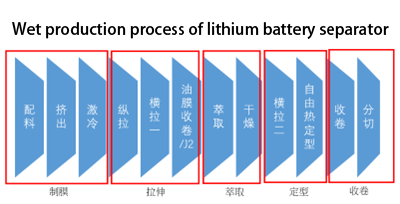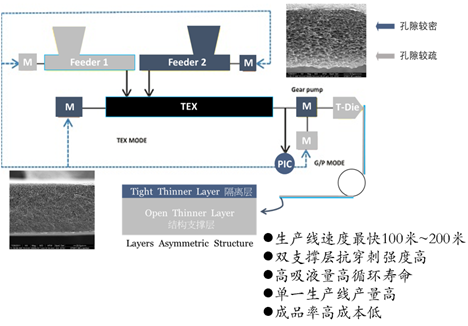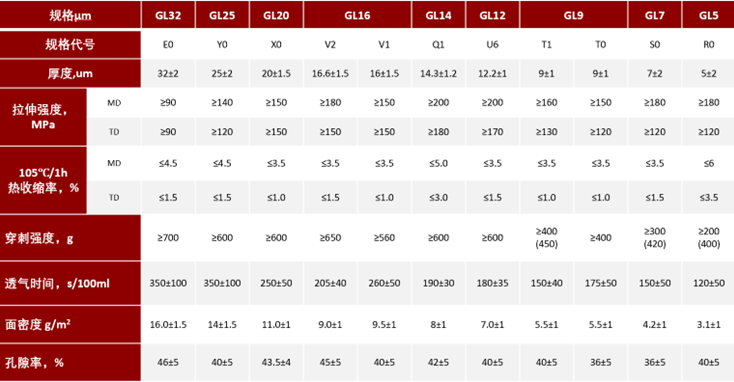Battery separator
Lithium ion battery separator is one of the four core materials of lithium-ion batteries. By adding a pore forming agent to polyolefin resin, heating and melting it to form a uniform mixture, then cooling it down for thermal phase separation, pressing it to obtain a membrane, heating the membrane to a temperature close to the melting point, conducting biaxial stretching to orient the molecular chains, and finally holding it for a certain period of time, residual solvents can be washed away with volatile substances to prepare interconnected microporous membrane materials.

Isolate positive and negative electrodes
The main function of the separator is to separate the positive and negative poles of the battery, preventing short circuits caused by contact between the two poles. Due to the non-conductive nature of the diaphragm, it ensures that current can only flow through external circuits, thereby maintaining the electrochemical reaction of the battery.
Ion channel
The separator is the channel through which lithium ions move between the positive and negative electrodes of a battery. It allows lithium ions to pass through, but prevents the flow of electrons, ensuring that current can only flow through external circuits, thereby maintaining the electrochemical reaction energy of the battery.
Control reaction rate
The pore size and distribution of the separator directly affect the transmission rate of lithium ions, which in turn affects the charging and discharging efficiency and power output of the battery. By optimizing the design of the separator, the reaction rate of the battery can be adjusted to meet the needs of different application scenarios.
The pore size and distribution of the separator directly affect the transmission rate of lithium ions, which in turn affects the charging and discharging efficiency and power output of the battery. By optimizing the design of the separator, the reaction rate of the battery can be adjusted to meet the needs of different application scenarios.
Improve thermal stability
When the battery overheats or experiences an internal short circuit, the diaphragm needs to have good thermal stability to prevent the diaphragm from melting or shrinking due to temperature rise, thereby avoiding further damage to the battery and the occurrence of safety accidents.

Lithium battery separator
Stable, high mechanical strength, high temperature resistance
Safe, high acidity and alkalinity performance, high filtration performance
High cycle life
